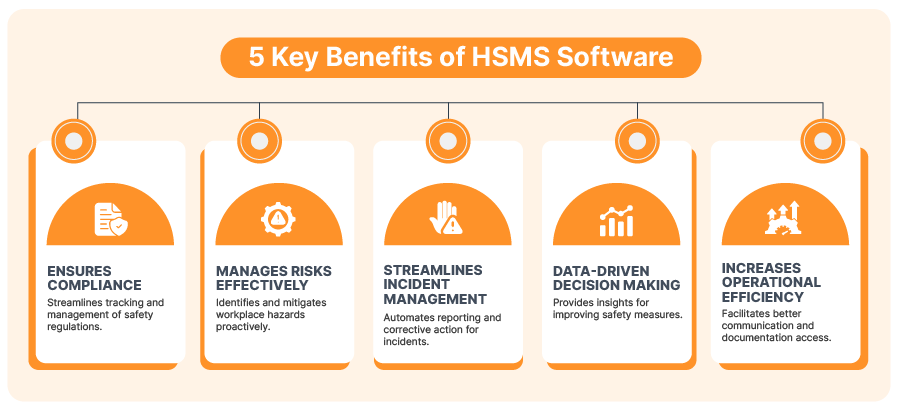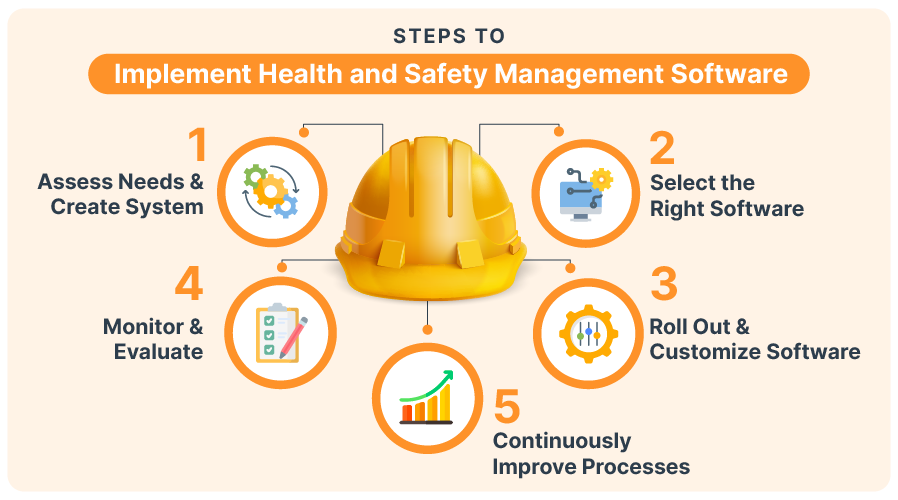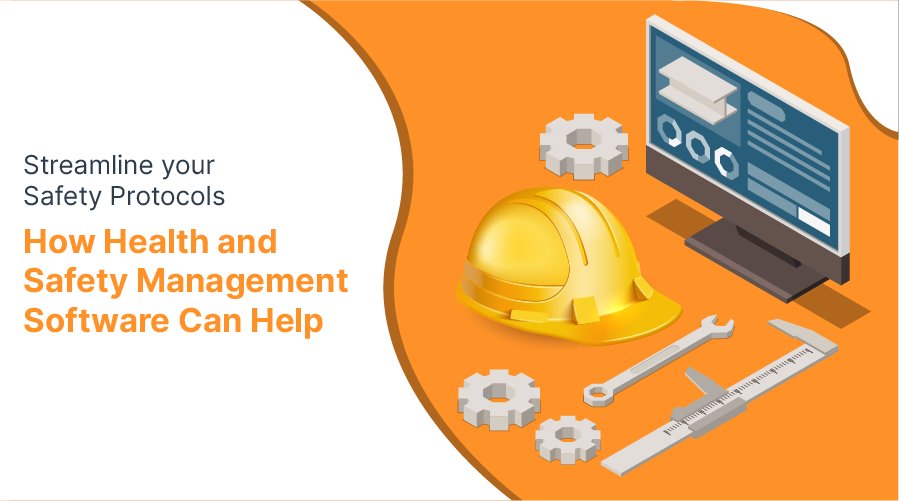As an employer in the 21st century, your employees expect more from you than just wages. They expect you to provide a safe and secure work environment where they can perform their best and keep growing as professionals. To provide this, you need a well-thought-out safety management system in place. Health and Safety Management Software facilitates you to achieve this with ease.Implementing safety protocols is the core of establishing a health and safety management system.
However, without the right tools, this can be a time-consuming and resource-intensive process. In this article, we shall explore how health and safety management software allows you to streamline the process of implementing safety protocols in your organization.
What is Health and Safety Management Software?
Health & safety management software is a digital platform that automates all the tasks related to health and safety management in the workplace. It helps implement, monitor, review, and improve your workplace's occupational health and safety management system.
Safety management systems software is designed with occupational safety legislation in mind. It helps your organization comply with standards such as ISO 45001 and other local, national, and international regulations. This can help you avoid hefty fines, penalties, and other legal charges that may arise due to improperly managed safety protocols.
The health and safety management software collects data related to health and safety, systematized incident reporting, automates safety audits, conducts risk assessments, and manages and stores all related documentation.
Benefits of Implementing Health and Safety Management Software
Implementing health and safety management software in your workplace has many benefits. Here is why you should consider it:

1. Compliance
Compliance is an important part of your organization's reputation, as it symbolizes your commitment to following stringent safety protocols and creating a safe work environment for your employees. Software for safety management systems helps you automate the system for tracking regulatory requirements, changes, and schedules for all compliance-related activities.
By doing so, the software streamlines and integrates compliance-related tasks into daily operations and your workflow. This lets you meet all OHSMS certification requirements.
2. Managing Risks
Minimizing workplace accidents and incidents is an ongoing process that requires proactive management. The software helps you with this by creating a system to identify, assess, and prioritize risks in your organization. It also helps with implementing control measures to mitigate them. This allows you to protect your employees and reduce potential financial losses.
3. Streamline Incident Management
Health and safety incidents in the workplace are almost always unexpected and sudden. You need a well-defined system in place for quick and efficient incident management. Safety management systems software creates a system for reporting incidents, investigating them, and taking all the necessary corrective actions. It assigns employees responsible for all incident management tasks, automates notifications, and documents status updates.
From the management perspective, the software gives you a bird' s-eye view of incident management-related actions within your organization. This helps you apply the lessons learned to prevent future occurrences and enhance the efficiency of incident handling.
4. Make Informed Decisions
Good workplace decisions come from data-driven insights. Safety management software usually comes with analytics features that you can use to process health and safety data. This data will provide various strategic insights on areas that need improvement. It can also help you monitor the performance of various safety initiatives across the organization.
5. Better Efficiency
Health and safety management software improves communication and collaboration between various organizational stakeholders. This makes the overall process of managing safety efficient. It acts as a centralized repository for all health documentation, which makes it easy to access, share, and manage.
6. Financial Benefits
When the number of incidents is reduced and compliance improved, health and safety management costs also decrease. Accidents are associated with medical expenses, legal fees, and fines, all of which can be avoided by implementing health and safety management software.
How do you Implement Health and Safety Management Software?
Implementing health and safety management software is a multi-step process that requires careful planning at the management level. Here are the steps you need to follow to ensure your implementation is successful:

1. Create a Safety Management System
Before committing to a software solution for your organization, assess your specific needs. Create a health and safety management system. This system would help you identify all the relevant safety protocols, the involved stakeholders, and the various tasks related to occupational safety management.
2. Select the Right Software
Select the health and safety management software based on your needs. Choose a software that is customizable to your organization's specific requirements and is scalable enough to grow with your organization. Additionally, ensure that the software solution is user-friendly and easy to integrate into the systems existing at your organization.
3. Implement the Software
Create a detailed outline of your OHSMS implementation steps. Identify teams responsible for the implementation. Once you roll out the software, customize and configure your organization's health and safety processes and populate it with necessary data. At this stage, train your employees to use the software.
4. Monitor and Evaluate
Once the software for safety management systems has been implemented, collect feedback from your team on the software's performance and major concerns you have while using it. Also, review the reports generated by the software regarding your health and safety performance to identify areas for improvement.
5. Improve Processes
Use the insights generated by the software to make necessary changes and adjustments to your health and safety processes. Don't forget to update the software regularly to make sure you are benefitting from the complete set of features.
Final Thoughts
Implementing a health and safety management software is a non-negotiable step towards streamlining the safety protocols at your workplace. This is an ongoing process that you must take up with planning and regular reviews.
A correctly implemented safety management software becomes an integral part of your organization's health and safety culture. With it in place, you can actively seek to create a secure workplace for your employees.






























